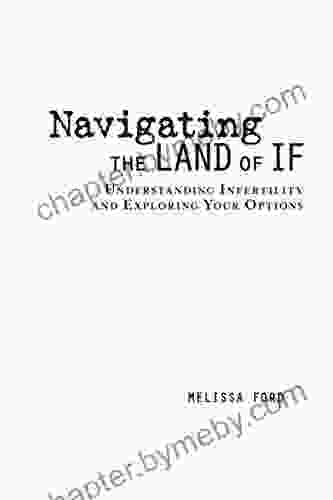What Life at the World's Margins Can Teach Us About Our Own Future

In the bustling streets of New York City, it's easy to forget that just a few blocks away, there are people living in poverty. In the gleaming towers of London, it's easy to ignore the homeless people sleeping on the streets. And in the sprawling suburbs of Los Angeles, it's easy to pretend that the favelas of Rio de Janeiro don't exist.
4.5 out of 5
| Language | : | English |
| File size | : | 15852 KB |
| Text-to-Speech | : | Enabled |
| Screen Reader | : | Supported |
| Enhanced typesetting | : | Enabled |
| X-Ray | : | Enabled |
| Word Wise | : | Enabled |
| Print length | : | 395 pages |
But the truth is, these people are all part of our world. They are our neighbors, our fellow citizens, and our brothers and sisters. And their lives have something important to teach us about our own future.
In her new book, Life at the World's Margins: Lessons for Our Future, anthropologist Susan Fainstein explores the lives of people living in poverty and inequality around the world. She argues that these people are not simply victims of circumstance, but rather resourceful and resilient individuals who have developed innovative strategies for survival.
Fainstein's book is based on her research in three very different communities: a shantytown in Mumbai, India; a favela in Rio de Janeiro, Brazil; and a trailer park in rural Arkansas, USA. In each of these communities, she found that people were struggling to make ends meet, but they were also finding ways to cope with their challenges and to build better lives for themselves and their families.
For example, in the shantytown in Mumbai, Fainstein met a woman named Asha who had started a small business selling food from her home. Asha had no formal education, but she was able to learn how to cook and run a business by watching her neighbors. She was also able to get a loan from a local microfinance organization, which helped her to expand her business.
In the favela in Rio de Janeiro, Fainstein met a young man named Pedro who had dropped out of school to join a drug gang. Pedro was drawn to the gang because it offered him a sense of belonging and purpose. But he eventually realized that the gang was not a good place for him, and he left to start a new life.
In the trailer park in rural Arkansas, Fainstein met a family who had lost their home in the Great Recession. The family was struggling to make ends meet, but they were able to get help from a local church and a social service agency. The family was also able to find new jobs and to get back on their feet.
These are just a few of the stories that Fainstein tells in her book. These stories show that even in the most difficult circumstances, people are capable of finding ways to survive and to build better lives for themselves and their families.
Fainstein's book is a timely reminder that we need to pay attention to the lives of the poor and marginalized. These people have a lot to teach us about resilience, survival, and the human spirit. And their stories can help us to build a more just and equitable future for all.
Here are some of the key lessons that we can learn from life at the world's margins:
- People are resourceful and resilient. Even in the most difficult circumstances, people are capable of finding ways to survive and to build better lives for themselves and their families.
- Community is important. People living in poverty and inequality often rely on their community for support and assistance. Community organizations can play a vital role in helping people to overcome their challenges and to build better lives.
- Education is important. Education can help people to improve their economic opportunities and to build a better future for themselves and their families.
- We need to pay attention to the lives of the poor and marginalized. These people have a lot to teach us about resilience, survival, and the human spirit. And their stories can help us to build a more just and equitable future for all.
Fainstein's book is a powerful and important work that sheds light on the lives of the poor and marginalized. It is a must-read for anyone who wants to understand the challenges facing our world today and to build a better future for all.
4.5 out of 5
| Language | : | English |
| File size | : | 15852 KB |
| Text-to-Speech | : | Enabled |
| Screen Reader | : | Supported |
| Enhanced typesetting | : | Enabled |
| X-Ray | : | Enabled |
| Word Wise | : | Enabled |
| Print length | : | 395 pages |
Do you want to contribute by writing guest posts on this blog?
Please contact us and send us a resume of previous articles that you have written.
 Book
Book Novel
Novel Page
Page Chapter
Chapter Text
Text Story
Story Genre
Genre Reader
Reader Library
Library Paperback
Paperback E-book
E-book Magazine
Magazine Newspaper
Newspaper Paragraph
Paragraph Sentence
Sentence Bookmark
Bookmark Shelf
Shelf Glossary
Glossary Bibliography
Bibliography Foreword
Foreword Preface
Preface Synopsis
Synopsis Annotation
Annotation Footnote
Footnote Manuscript
Manuscript Scroll
Scroll Codex
Codex Tome
Tome Bestseller
Bestseller Classics
Classics Library card
Library card Narrative
Narrative Biography
Biography Autobiography
Autobiography Memoir
Memoir Reference
Reference Encyclopedia
Encyclopedia Wesley C Salmon
Wesley C Salmon Neeli Cherkovski
Neeli Cherkovski William Wasserman
William Wasserman Melissa M Firman
Melissa M Firman Orysia Dawydiak
Orysia Dawydiak Michael Wisehart
Michael Wisehart Matthew Marchon
Matthew Marchon Raquel M Linhares
Raquel M Linhares Victoria Murphy
Victoria Murphy Norah Vincent
Norah Vincent Michael Mccarthy
Michael Mccarthy Marlena De Blasi
Marlena De Blasi Max Boot
Max Boot Nate Allen
Nate Allen Rob Beckett
Rob Beckett Sharon K Zumbrunn
Sharon K Zumbrunn Patricia Burroughs
Patricia Burroughs Robert A Gross
Robert A Gross Michael Cox
Michael Cox Upton Sinclair
Upton Sinclair
Light bulbAdvertise smarter! Our strategic ad space ensures maximum exposure. Reserve your spot today!

 Jordan BlairGeography Matters In Ancient Egypt Geography Matters In Ancient Civilizations
Jordan BlairGeography Matters In Ancient Egypt Geography Matters In Ancient Civilizations
 Mario SimmonsJourney of an Israeli in Palestine: An Unforgettable Odyssey of Discovery and...
Mario SimmonsJourney of an Israeli in Palestine: An Unforgettable Odyssey of Discovery and... Gustavo CoxFollow ·17.4k
Gustavo CoxFollow ·17.4k Walter SimmonsFollow ·14.5k
Walter SimmonsFollow ·14.5k Hamilton BellFollow ·19.4k
Hamilton BellFollow ·19.4k Bob CooperFollow ·7.7k
Bob CooperFollow ·7.7k Cooper BellFollow ·11.1k
Cooper BellFollow ·11.1k Camden MitchellFollow ·16.5k
Camden MitchellFollow ·16.5k Jimmy ButlerFollow ·18.2k
Jimmy ButlerFollow ·18.2k Kenneth ParkerFollow ·12.3k
Kenneth ParkerFollow ·12.3k

 Henry James
Henry JamesCold War Fighter Pilot Story: A Captivating Tale of...
Enter the Cockpit of...

 Rudyard Kipling
Rudyard KiplingYour Body Your Baby Your Choices: The Essential Guide to...
Pregnancy and...

 Fabian Mitchell
Fabian MitchellMichelle Obama: An Intimate Portrait - A Must-Read for...
Michelle Obama is a prominent figure in...

 Juan Butler
Juan ButlerUncover the Secrets of the Dead Land Warshawski Novels
Prepare to delve...
4.5 out of 5
| Language | : | English |
| File size | : | 15852 KB |
| Text-to-Speech | : | Enabled |
| Screen Reader | : | Supported |
| Enhanced typesetting | : | Enabled |
| X-Ray | : | Enabled |
| Word Wise | : | Enabled |
| Print length | : | 395 pages |












